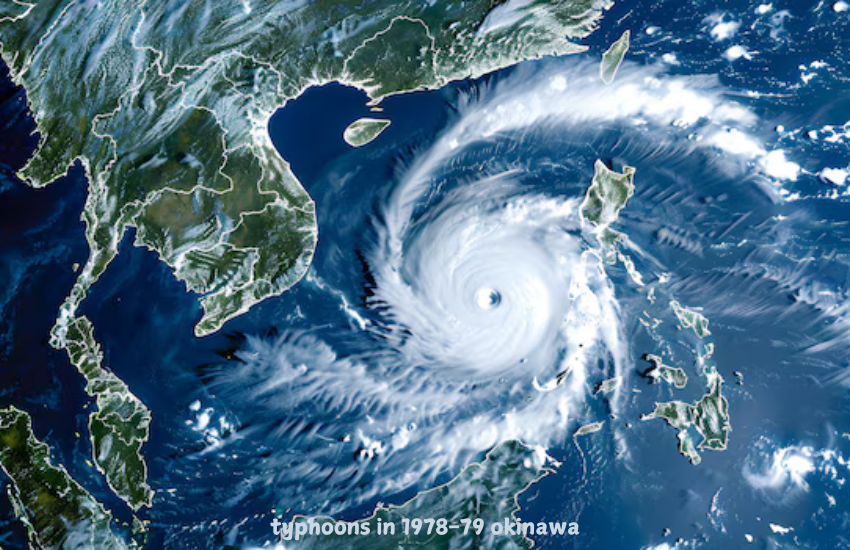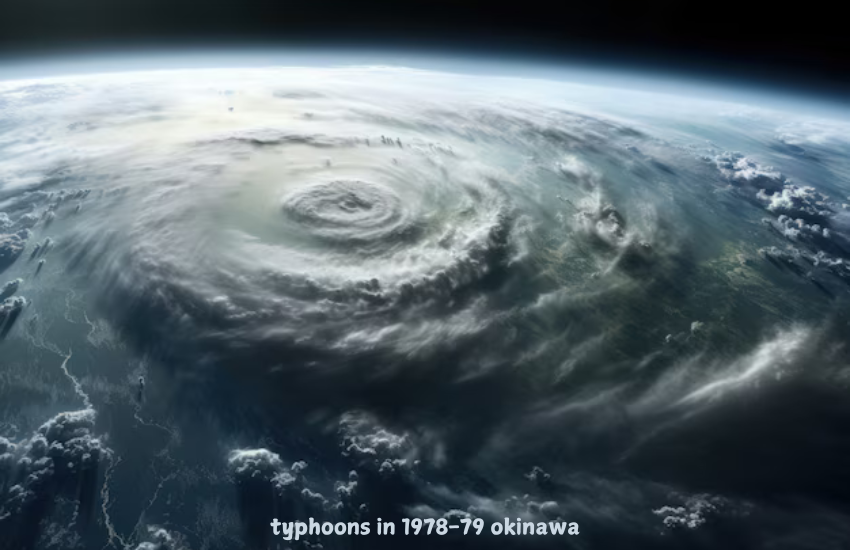Geographic and Climatic Context
Location of Okinawa
Okinawa is situated in the East China Sea, southwest of mainland Japan. Its geographic position makes it particularly vulnerable to typhoons, which generally form in the Pacific Ocean and move westward.
Climatic Conditions Affecting Typhoon Formation
The climatic conditions in the Pacific, including warm sea surface temperatures and conducive atmospheric conditions, foster the development of typhoons. Okinawa’s subtropical climate ensures that it lies in the direct path of many of these powerful storms.

Typhoon Season in Okinawa
General Typhoon Season
The typhoon season in Okinawa typically spans from June to November, with the peak occurring between August and October. During these months, the region braces for multiple typhoons, which can range from minor storms to devastating super typhoons.
Historical Significance
Historically, typhoons have shaped the socio-economic and environmental landscape of Okinawa. The island’s resilience and adaptive strategies have evolved significantly due to the frequent and often severe typhoon impacts.
Typhoon Vera (1978)
Formation and Path
Typhoon Vera formed in the Pacific in August 1978. It took a west-northwestward path, directly impacting Okinawa with fierce winds and heavy rainfall.
Impact on Okinawa
The typhoon caused widespread damage to infrastructure, uprooting trees, damaging homes, and disrupting power and water supplies. The torrential rains led to severe flooding, exacerbating the destruction.
Aftermath and Recovery
Recovery efforts were swift, with local and national governments mobilizing resources to aid the affected populations. The rebuilding process focused on improving infrastructure resilience to withstand future storms.
Typhoon Clara (1978)
Formation and Path
Typhoon Clara developed in September 1978 and followed a trajectory similar to Vera, but with varying intensity and impact patterns.
Impact on Okinawa
Clara brought intense winds and rain, leading to significant agricultural damage. The typhoon’s timing, close to Vera, compounded the recovery challenges.
Aftermath and Recovery
Recovery from Clara involved not just repairing physical damage but also addressing the compounded economic and social strains on the local population.

Typhoon Tip (1979)
Formation and Path
Typhoon Tip, forming in October 1979, holds the record for the largest and most intense tropical cyclone ever recorded. Its path took it near Okinawa, though it did not make a direct hit.
Record-Breaking Characteristics
With a diameter of over 2,220 kilometers and wind speeds exceeding 305 km/h, Tip was a meteorological phenomenon, setting records for both size and intensity.
Impact on Okinawa
Despite not hitting directly, Tip’s peripheral effects were felt in Okinawa through high winds and heavy rainfall, causing significant disruptions.
Aftermath and Recovery
The aftermath of Tip saw extensive efforts to fortify the island’s disaster preparedness and infrastructure. Lessons from Tip’s unprecedented scale were integrated into future typhoon response strategies.
Other Significant Typhoons of 1978-79
Overview of Other Typhoons
In addition to Vera, Clara, and Tip, several other typhoons affected Okinawa during this period, each contributing to the cumulative impact on the region.
Lesser-Known Impacts
These lesser-known storms also caused damage and disruptions, though on a smaller scale, highlighting the persistent threat typhoons pose to Okinawa.
Preparation and Response
Measures Taken by Local Government
Local government measures included early warning systems, evacuation plans, and public education campaigns to enhance community preparedness.
Community Preparedness
Community involvement in disaster preparedness, including drills and the establishment of shelters, played a crucial role in mitigating the impact of these typhoons.
Impact on Infrastructure
Damage to Buildings and Infrastructure
The typhoons caused extensive damage to residential and commercial buildings, roads, and public utilities, leading to substantial repair and rebuilding costs.
Economic Repercussions
The economic impact was significant, with the cost of repairs and lost productivity affecting the local economy for years.
Impact on Agriculture
Damage to Crops
The agricultural sector suffered heavily, with crops like sugarcane, rice, and vegetables being devastated by the storms.
Long-Term Effects on Farming and Fishing
The long-term effects included soil erosion, loss of arable land, and disruption to fishing activities, impacting food security and livelihoods.
Humanitarian Impact
Casualties and Injuries
The human toll included fatalities, injuries, and psychological trauma, underscoring the need for effective emergency response and support systems.
Displacement and Relief Efforts
Many residents were displaced, requiring extensive relief efforts including temporary housing, medical care, and food supplies.
Environmental Impact
Effects on Local Ecosystems
The typhoons caused significant environmental damage, including deforestation, habitat loss, and pollution of water bodies.
Long-Term Environmental Changes
Long-term changes included altered landscapes and ecosystems, which required years of natural and human-assisted recovery.
Recovery and Reconstruction
Immediate Recovery Efforts
Immediate efforts focused on restoring essential services and infrastructure, clearing debris, and providing humanitarian aid.
Long-Term Reconstruction Projects
Long-term projects included building typhoon-resistant infrastructure, improving urban planning, and enhancing environmental conservation efforts.
Lessons Learned
Improvements in Typhoon Prediction and Response
Advancements in meteorological science and technology have improved typhoon prediction and response, helping to mitigate future impacts.
Community Resilience
Community resilience has been strengthened through better preparedness, adaptive strategies, and a stronger focus on sustainable development.

Conclusion
Summary of Findings
The typhoons in 1978-79 okinawa had a profound impact on Okinawa, highlighting the island’s vulnerability and the importance of effective disaster management.
Future Outlook for Okinawa in the Face of Typhoons
With ongoing improvements in infrastructure, preparedness, and resilience, Okinawa continues to adapt to the ever-present threat of typhoons, striving to safeguard its communities and environment.
Frequently Asked Questions (FAQs)
- What were the main typhoons that affected Okinawa in 1978-79?
- The main typhoons were Typhoon Vera, Typhoon Clara in 1978, and Typhoon Tip in 1979.
- How did Typhoon Tip make history?
- Typhoon Tip was the largest and most intense tropical cyclone ever recorded, with unprecedented size and wind speeds.
- What measures were taken to prepare for typhoons in Okinawa?
- Measures included early warning systems, evacuation plans, public education campaigns, and community preparedness drills.
- What was the economic impact of these typhoons on Okinawa?
- The economic impact was significant, involving substantial repair and rebuilding costs and affecting local productivity and livelihoods.
- How did the typhoons affect Okinawa’s agriculture?
- The storms caused severe damage to crops and long-term disruptions to farming and fishing activities.
- What lessons were learned from the 1978-79 typhoon season?
- Lessons included the need for better prediction and response systems, improved infrastructure resilience, and enhanced community preparedness.


